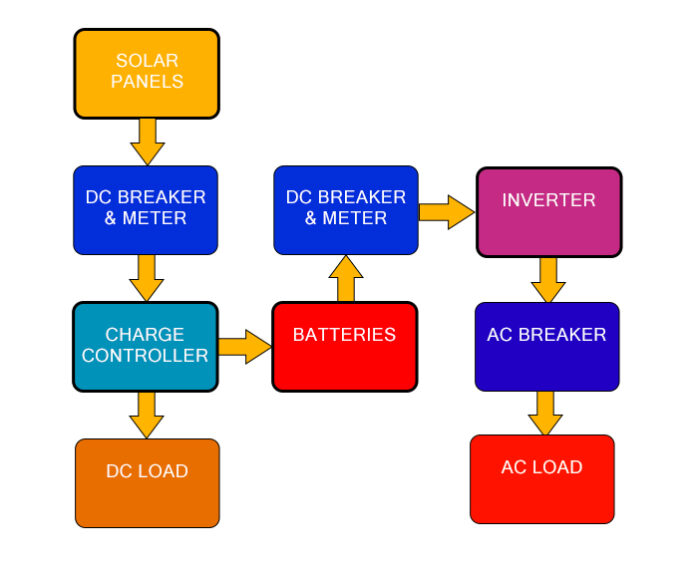What is an Off-grid Solar Power System?
An off-grid solar power system is a stand-alone system that generates electricity using solar panels and stores it in batteries for use when the sun is not shining. These systems are not connected to the utility grid and are typically used in remote locations where it is not practical or cost-effective to run power lines. They can also be used as a backup power source for homes and businesses in case of power outages.
What are the components of an off-grid solar power system?
An off-grid solar power system typically consists of the following components:
- Solar panels: These convert sunlight into direct current (DC) electricity.
- Charge controller: This regulates the amount of electricity going into the batteries to prevent overcharging and damage.
- Batteries: These store the electricity generated by the solar panels for use when the sun is not shining.
- Inverter: This converts the DC electricity stored in the batteries into alternating current (AC) electricity, the type most commonly used in homes and businesses.
- Generator: Many off-grid systems use a generator as a backup power source or to supplement solar power during periods of low sunlight.
- Metering: A device to measure the amount of electricity produced and consumed.
- Wiring and safety equipment : To connect the components and ensure safe operation.
- Mounting hardware: To mount solar panels on the roof or ground.
These are the essential components of an off-grid solar power system; some systems may include additional components, such as a wind turbine or hydroelectric generator, to supplement the solar power.
What factors should be considered to build a DIY solar power system?
When building a DIY off-grid solar power system, there are several factors to consider to ensure that the system is safe, efficient, and effective:
- Energy requirements: Determine the amount of electricity you need and size the system accordingly.
- Solar panel output: Make sure your solar panels can generate enough electricity to meet your needs.
- Battery size and type: Choose large enough batteries to store the electricity generated by the solar panels and suitable for off-grid use.
- Inverter size: Make sure the inverter you choose can handle the amount of electricity your system will generate.
- Wiring and safety equipment: Use appropriate wiring and safety equipment to connect the components and ensure safe operation.
- Weather and shading: Consider the local weather conditions and potential shading from nearby trees or buildings when selecting a location to install the solar panels.
- Cost: factor in the cost of all the components and the installation.
- Legal and Permits: Make sure you comply with all local building codes and regulations and obtain any necessary permits before installing the system.
- Maintenance: DIY systems require regular maintenance to keep them running smoothly, so factor in the cost and time needed to maintain the system over its lifetime.
- Expertise: Building a solar power system requires knowledge of electrical work, so it’s essential to make sure you have the necessary skills and experience before attempting a DIY project.
What might be the average costs in Florida to build a 15-kW solar power system yourself, and what might be the number of panels, batteries, inverters, and electrical connectors?
Building a 15-kW solar power system in Florida will depend on various factors, such as the specific components used, the location, and the labor cost. However, a rough estimate of the average cost to build a 15-kW solar power system in Florida may be around $25,000 to $30,000.
For a 15-kW solar power system, the number of solar panels required will depend on the size and efficiency of the panels. A rough estimate would be around 40 to 50 solar panels.
The number of batteries required will depend on the capacity and voltage of the batteries. A rough estimate would be around 20 to 24 batteries.
The number of inverters required will depend on the capacity and type of the inverters. A rough estimate would be 1 to 2 inverters.
The number of electrical connectors required will depend on the specifics of the system and the type of connectors used. But it can be safe to assume that you will need several electrical connectors to connect the various components of the system.
It’s important to remember that this is a rough estimate, and the actual cost and number of components may vary depending on the specific components used, location, and labor cost. It’s always better to consult a professional solar installer or electrician to get an accurate estimate for your situation.



